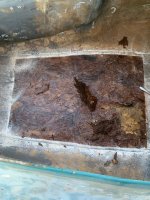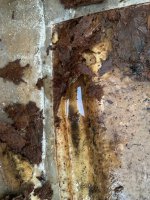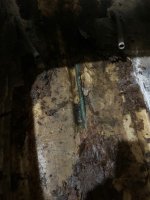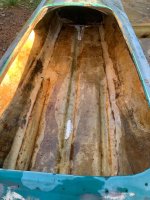I have decided that ya'll are a REALLY bad influence.... I have always been jealous of you east coast guys finding cool old boats for sale. Now it was my turn.
Saw where Eric had posted this in the "Seen Elsewhere" board a while back and decided to toss the guy a lowball offer not expecting a reply. Well. it didn't go as planned as he accepted it. Just picked it up today and spent an hour cleaning out all the junk that some prior owner had put in it. Based on what I have seen, the wood in the floor is all waterlogged and the foam in the sides of the top are most likely wet as well. The issue with the floor was caused by a prior owner mounting a steering control to the floor by drilling drywall screws through the fiberglass. They also ran the control wires through conduit that they glassed into the floor and in the process, covered the drain hole with glass. As a result it had standing water in it that was able to get into the floor and foam on the sides.
On the positive side the bottom looks to be in good condition and except for one crack the top section is as well. I did some measuring, and I have enough Coosa Board left over from the Broadbill project to replace the wood. Whoever made the boat did not skimp on fiberglass - the top section glass is 1/4" +/- thick.
Something I was surprised by is the fact there is not a hole for a sculling oar to go through. Looks like the PO used the trolling motor to sneak up on birds which is only slightly illegal.
Would like some info on the boat if anyone knows anything about it. The owner said someone IM'ed him on Marketplace and said it was built by a Peter Witham from Newmarket Nh in the 70's. I didn't see a builder tag anywhere on it but really have not dug into it too much yet.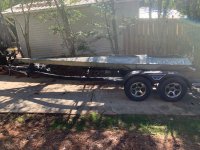

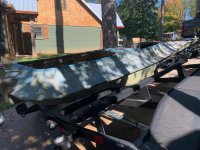
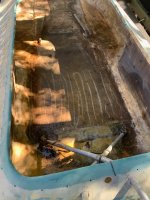
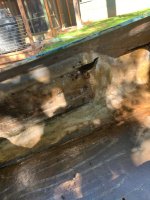
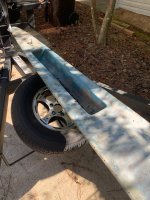
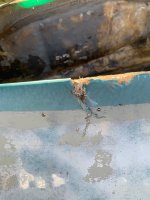
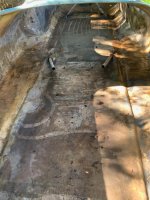
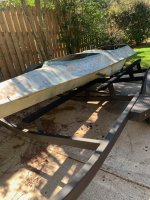
Saw where Eric had posted this in the "Seen Elsewhere" board a while back and decided to toss the guy a lowball offer not expecting a reply. Well. it didn't go as planned as he accepted it. Just picked it up today and spent an hour cleaning out all the junk that some prior owner had put in it. Based on what I have seen, the wood in the floor is all waterlogged and the foam in the sides of the top are most likely wet as well. The issue with the floor was caused by a prior owner mounting a steering control to the floor by drilling drywall screws through the fiberglass. They also ran the control wires through conduit that they glassed into the floor and in the process, covered the drain hole with glass. As a result it had standing water in it that was able to get into the floor and foam on the sides.
On the positive side the bottom looks to be in good condition and except for one crack the top section is as well. I did some measuring, and I have enough Coosa Board left over from the Broadbill project to replace the wood. Whoever made the boat did not skimp on fiberglass - the top section glass is 1/4" +/- thick.
Something I was surprised by is the fact there is not a hole for a sculling oar to go through. Looks like the PO used the trolling motor to sneak up on birds which is only slightly illegal.
Would like some info on the boat if anyone knows anything about it. The owner said someone IM'ed him on Marketplace and said it was built by a Peter Witham from Newmarket Nh in the 70's. I didn't see a builder tag anywhere on it but really have not dug into it too much yet.











